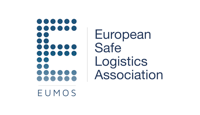Hier finden Sie die deutsche Version dieses Artikels
Vehicle stability – words of advice from TÜV
At the 5th International Eumos Symposium in Vienna in September 2017, Martin Keller from TÜV Nord presented the topic “Vehicle body stability: New guideline EN 12642-03:2017”. As an inspection authority, TÜV is an important actor in terms of vehicle stability, which to a large extent decides over whether a safe and accident-free transport chain can be guaranteed. His presentation initially covers the valid testing criteria which are examined in static and dynamic procedures, and lists the standards which are recorded as formulas. He expressly speaks out in favour of the modern Code XL, which entails the side walls not yielding to any kind of deformation.
Annual inspections must be standardised
The inspections of the vehicles do not only relate to the side walls but also to the front and rear wall, and should also be considered in combination with the respective maximum permitted height of the cargo. Of course, wear and tear to the material must also be taken into account, which is why Mr Keller argues for annual inspections. Especially during lateral acceleration, some vehicles are liable to fail after a certain period of time and therefore pose a risk to everyday traffic.
If you fail the inspection, it’s time to reconsider
Not just acceleration, but also braking manoeuvres and U-turns are tested by TÜV. One new feature is that the sensor is no longer attached to the rear wall of the vehicle during measuring, but rather, underneath the vehicle – this is intended to result in more exact data. Each testing criterion is tested three times, and only then is a decision made about whether the vehicle has passed. “It must be ensured that the vehicles we send out onto the roads actually work”, Mr Keller emphasises. Every trailer that fails should, rather than being a frustration for the producer, cause them to reconsider. The construction of the vehicle body needs to be reviewed and reassembled – after all, safety is the top priority.
Certificates to help with inspections
Mr Keller recommends carrying the certificate and inspection report in the associated vehicle, as this is the only way a vehicle can be properly assessed during a roadside inspection. He is somewhat sceptical towards the new trend of flexible elements in the vehicle body. Of course, he can see the potential, but that is all still a long way off. The theoretical distortion of trailers however will definitely be a topic for discussion, that is something even Mr Keller can agree on.
The full lecture is as always
As slideshow to read:
Martin Keller – Vehicle stability
As a podcast for the car:
As a video for the road or at home:
[embedyt] https://www.youtube.com/watch?v=QbIe-WVa2d0[/embedyt]

